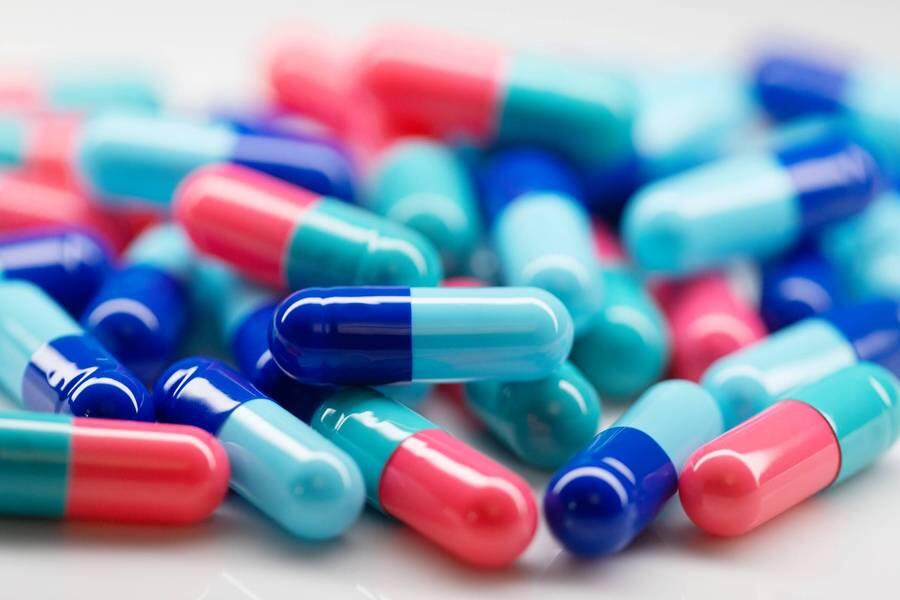Encapsulation Evolution: A Catalyst for Transformative Change in Healthcare

In the dynamic landscape of pharmaceutical development, innovation is the cornerstone of progress. As researchers, technicians and manufacturers continually strive to overcome challenges in drug formulation, delivery and patient adherence, one technology stands out for its transformative potential: encapsulation.
Encapsulation, the process of enclosing active pharmaceutical ingredients within a protective shell, has revolutionized drug delivery. It provides solutions to myriad formulation hurdles such as: enabling the delivery of incompatible drugs, dual-release profiles, liquid filling with enhanced bioavailability, peptides for oral delivery, as well as enhancing the patient experience.
This article delves into the multi-faceted benefits of encapsulation technology and its profound impact on pharmaceutical development — where empty hard capsules are not just containers but have become catalysts for real progress in healthcare.
A Preferred Choice for Accelerated Product Development
Among the many options available, empty hard capsules have emerged as a preferred choice for encapsulating and delivering new chemical entities (NCEs), due to their versatility, compatibility and patient-centric advantages. Empty hard capsules offer unparalleled flexibility, accommodating a wide range of drug formulations, including solids, semi-solids and liquids. Their compatibility with diverse drug compounds, from poorly soluble to sensitive molecules, makes them an ideal choice for encapsulating NCEs with varied physicochemical properties. Whether it’s immediate or modified release formulations, enteric coating, or specialized delivery systems, empty hard capsules provide a customizable platform to meet the specific needs of NCEs both during development and commercialization.
One of the primary challenges in NCE development today is achieving optimal bioavailability, especially for compounds with limited solubility issues. Empty hard capsules address this challenge by facilitating the formulation of drug compounds in bioavailable forms, such as lipid-based or self-emulsifying formulations.
Additionally, the inert nature of hard capsules provides a readily available protective barrier against environmental factors, preserving the shelf life of NCEs, thereby ensuring product quality and compliance with regulatory standards.
Ideal for Clinical Trials
Double-blind clinical studies are the gold standard for evaluating the safety and efficacy of new pharmaceuticals, providing unbiased and reliable evidence for regulatory approval and clinical practice. Central to the success of these studies is the selection of appropriate dosage forms that ensure blinding integrity, dosing accuracy and patient compliance.
Clinicaps, specialized capsules designed for clinical trials, have emerged as a preferred choice for encapsulating investigational drugs in double-blind clinical trials, offering unique advantages and considerations that enhance study integrity and efficiency.
Empty hard capsules provide an ideal vehicle for encapsulating investigational drugs, as they can be easily filled with active or placebo formulations whilst — at the same time — maintaining identical appearance, size and taste. The opaque nature of hard capsules prevents visual identification of the encapsulated drug, further enhancing blinding integrity and minimizing potential sources of bias. Furthermore, the availability of different capsule sizes enables dose escalation or adjustment without compromising this integrity, which offers flexibility to accommodate varying dosing regimens in clinical trials.
Empty hard capsules contribute to enhanced patient compliance by offering a convenient and familiar dosage form that is easy to swallow and tolerable for participants. Unlike tablets or powders, which may have undesirable taste or texture, capsules are generally well-accepted by study participants, minimizing the risk of non-compliance due to medication aversion or discomfort.
Empty Hard Capsules: Guardians of Drug Stability
Ensuring drug stability is paramount in pharmaceutical formulation to maintain potency and efficacy throughout shelf life. Empty hard capsules serve as an indispensable tool in this regard, providing a protective barrier against moisture, oxygen and light, thereby safeguarding drug integrity.
Moisture, oxygen and light pose a significant threat to the stability of sensitive drugs, ultimately leading to degradation due to hydrolysis, oxidation, or photolytic reactions, each of which respectively contributes towards loss of efficacy. Empty hard capsules act as a barrier, preventing ingress of moisture and minimizing oxygen permeation, thus protecting the encapsulated drug from the above deleterious effects. The physical barrier due to the thick shell wall ensures that the drug remains shielded from humidity and oxidative degradation, even in challenging storage conditions, thus extending shelf life and maintaining product quality. Opaque empty hard capsules offer light-blocking properties, shielding the encapsulated drug from photodegradation due to harmful UV and visible light, preserving product stability in light-exposed environments.
The Efficiency of Capsules in Reducing Excipients
Unlike tablets that often require multiple processing excipients, capsules have minimal requirement of excipients along with the drug substance to be filled in the capsule shell. This simplicity not only streamlines the formulation process but also reduces the complexity of regulatory submissions and quality control procedures, saving time and resource for pharmaceutical developers. By minimizing the number and quantity of excipients, capsules mitigate the risk of such interactions, enhancing the long-term stability and shelf life of pharmaceutical products. Moreover, the use of fewer excipients in the formulation process can improve patient safety by reducing the potential for allergic reactions, intolerances or any adverse effects associated with excipient exposure. Capsules also offer a more patient-friendly dosage form, as they eliminate the need for taste masking agents and coatings. As a result, this enhances patient acceptance and adherence to prescribed therapies, particularly in sensitive patient populations such as children, elderly individuals, or patients with swallowing difficulties.
Making Multiple Dosage Strengths Cost-Effective and Scalable
During the development and commercialization of pharmaceutical products, dosage variations are common to accommodate different patient populations and therapeutic regimens. Encapsulation technology simplifies the process of scaling up and modifying dosages without necessitating changes to the underlying formulation. For instance, a manufacturer producing a cardiovascular medication may need to offer multiple dosage strengths to accommodate patients with varying degrees of disease severity. Encapsulation allows for the seamless adjustment of dosage strengths by filling dose equivalent contents in readily available standard capsule sizes without re-developing the core formulation – saving time and resources. From a manufacturing standpoint, empty hard capsules offer cost-effective solutions for drug delivery. Their compatibility with high-speed encapsulation equipment allows for efficient and scalable production, reducing manufacturing costs and time-to-market for pharmaceutical companies.
Tailoring Release Profiles and Pharmacokinetics
A real boon for formulators, empty hard capsules offer the flexibility to design tailored release drug profiles, to help optimize drug pharmacokinetics and therapeutic outcomes.
By modulating the size, composition and coating of multiparticulate systems filled in capsules, researchers can tailor the release kinetics of drugs to match desired dosing regimens and therapeutic targets. This enables precise control over drug release profiles, minimizing fluctuations in plasma drug concentrations and reducing dosing frequency, therefore improving patient compliance, particularly for medications with narrow therapeutic windows or sustained therapeutic effects.
Availability of ready-to-use delayed-release and enteric capsules enable drug release in the intestines, thus maximizing therapeutic efficacy of acid-sensitive molecules. Empty hard capsules have also proved to be an ideal carrier for formulating poorly soluble drugs, including lipid-based or self-emulsifying liquid formulations, thereby enhancing drug solubility and permeability — translating into higher systemic exposure and therapeutic efficacy.
Enabling Product Differentiation & Aesthetics
In today’s competitive market, product differentiation is essential for brand recognition and market success. Encapsulation technology provides opportunities for customizing capsule types, colors and printing options, allowing manufacturers to create distinct product identities. For example, a manufacturer may use encapsulation to produce visually appealing capsules using a variety of different colors and shapes, catering to consumer preferences, and enhancing brand recognition on store shelves. Additionally, encapsulation technology enables the delivery of multiple-colored pellets within a single capsule, enhancing the overall aesthetic appeal of pharmaceutical products. For instance, a multivitamin supplement may contain pellets of different colors representing various vitamins and minerals encapsulated together in a single capsule.
Conclusion
In conclusion, encapsulation technology represents a pivotal advancement in pharmaceutical science, offering a multitude of benefits across the drug development continuum. From streamlining formulation processes to enhancing drug stability, bioavailability and patient adherence, encapsulation has proven to be a versatile and indispensable tool for researchers and manufacturers alike. With its various applications, encapsulation is not merely a technical innovation but a catalyst for transformative change in healthcare.
Author Details
Dr. Subhashis Chakraborty, Head of Global Product Management- ACG Capsules
Publication Details
This article appeared in Tablets and Capsules Magazine: Vol. 22, No. 4 September/October 2024 Pages: 29-31

 Go Back
Go Back


